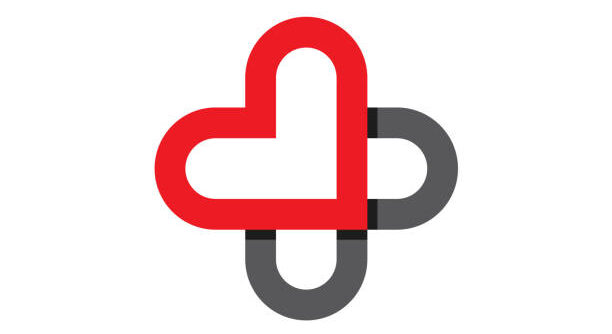
President Trump’s latest strategy to tackle high drug prices aims to tie the price of U.S. prescription medicines to the prices paid for the same products in other countries, a so-called “most-favored-nation” policy that was previously proposed but never took effect.
Drug companies already face price negotiation for select products covered by Medicare and Medicaid under a program administered by the Department of Health and Human Services. But that program was created by statute, the Inflation Reduction Act. Like many of Trump’s policies, his new most-favored-nation drug price plan comes via an executive order.
“The principle is simple,” Trump said during a press conference Monday. “Whatever the price paid for a drug in other developed countries, that is the price that Americans will pay.”
Trump said this policy change is needed because high drug prices in the U.S. subsidize low drug prices in foreign markets, an imbalance that amounts to other countries getting a “free ride” off of American innovation. While Trump was critical of pharma companies during the press conference, he at turns defended them. He said other countries “extort drug companies by blocking their products unless they accept bottom-line pricing and very low dollar amounts for their product, unfairly shifting the burden on to American patients.” Trump specifically called out European Union countries for this alleged practice. Trump suggested he could use trade policy, such as blocking European countries from selling cars in the U.S., as a way to defend drug companies from these practices.
Details on specific most-favored nation drug prices are forthcoming, but similar to the drug price negotiation program, it will be spearheaded by HHS. Without identifying any specific products, Trump claimed some drug prices would “be reduced immediately” by 50% or even up to 90%. Trump also said he planned to cut out “the middlemen,” which is a term often used to refer to pharmaceutical benefit managers, companies whose role includes negotiating drug prices on behalf of health plans. Without offering specifics, Trump said his administration would cut out middlemen and facilitate the sale of drugs directly to the American people.
Trump first tried to implement most-favored-nation drug pricing during his first presidential term. A 2020 executive order proposed tying the prices of drugs under Medicare Part B to the drug prices in other countries. The plan proposed testing this most-favored-nation drug pricing over seven years for the 50 drugs with the highest Medicare Part B spending. But a proposed CMS rule implementing the plan ran into legal challenges that kept it from taking effect. The Biden administration subsequently rescinded the proposed rule.
Under the new executive order, HHS Secretary Robert F. Kennedy, Jr., will facilitate direct-to-consumer purchasing programs for drugmakers that sell their drugs at the most-favored-nation price. Trump’s order also calls for the HHS secretary, in conjunction with other agency officials, to come up with most-favored-nation price targets for pharmaceutical companies, bringing drug prices in line with comparably developed nations. These prices will be determined within the next 30 days.
If companies do not bring their prices in line with prices proposed by HHS, the order then calls for the HHS secretary to impose most-favored-nation pricing through the agency’s rulemaking procedures. The next step under the order will be for the FDA to take steps toward importing prescription drugs from developed nations that have lower drug prices. Waivers permitting such importations will be granted on a case by case basis, according to the order. In the press conference, Trump said these imports would apply to drugs that are safe and legal. He added that imports would place downward pressure on drug prices.
The biopharmaceutical industry trade group PhRMA took a mixed view of the Trump order. In a statement issued Monday, PhRMA President and CEO Stephen Ubl attributed the high cost of U.S. drug prices to foreign countries “not paying their fair share.” He also pinned higher drug prices to middlemen, echoing previous comments the group has made regarding PBMs. But even as Ubl applauded both trade negotiations to force other countries to pay more and PBM reform, he took a stance against tying U.S. drug prices to prices in foreign countries.
“Importing foreign prices from socialist countries would be a bad deal for American patients and workers,” Ubl said. “It would mean less treatments and cures and would jeopardize the hundreds of billions our member companies are planning to invest in America — threatening jobs, hurting our economy and making us more reliant on China for innovative medicines.”
In a note sent to investors, Leerink Partners analyst Michael Cherny said Trump’s comments about middlemen raise questions about the role of PBMs going forward. Whether pushing for more direct-to-consumer sales drives consumers to buy prescription drugs outside of traditional insurance plans remains an open question. The new executive order could be a headwind for PBMs, but in general, branded drugs drive a small basket of their total profits. More direct-to-consumer transactions would mean more for insurance companies and not for the location of the prescription, Cherny said. In Leerink’s view, CVS’s retail pharmacy would still remain the biggest and most important drug-dispensing entity.
Analysts at William Blair view the order as way to remove layers of rebates and non-transparent pricing in the U.S. Rather than cutting U.S. drug prices, the firm said the order could be a way to get other developed countries to increase their prices and drug expenditures. But even viewed this way, the firm has outstanding questions: Whether companies can raise prices on already approved drugs with established pricing across developed countries, and whether the threat of drug importation from other countries with lower list prices can be accomplished. William Blair also expects legal challenges to any implementation of most-favored-nation drug pricing.
Photo: Andrew Harnik, Getty Images






